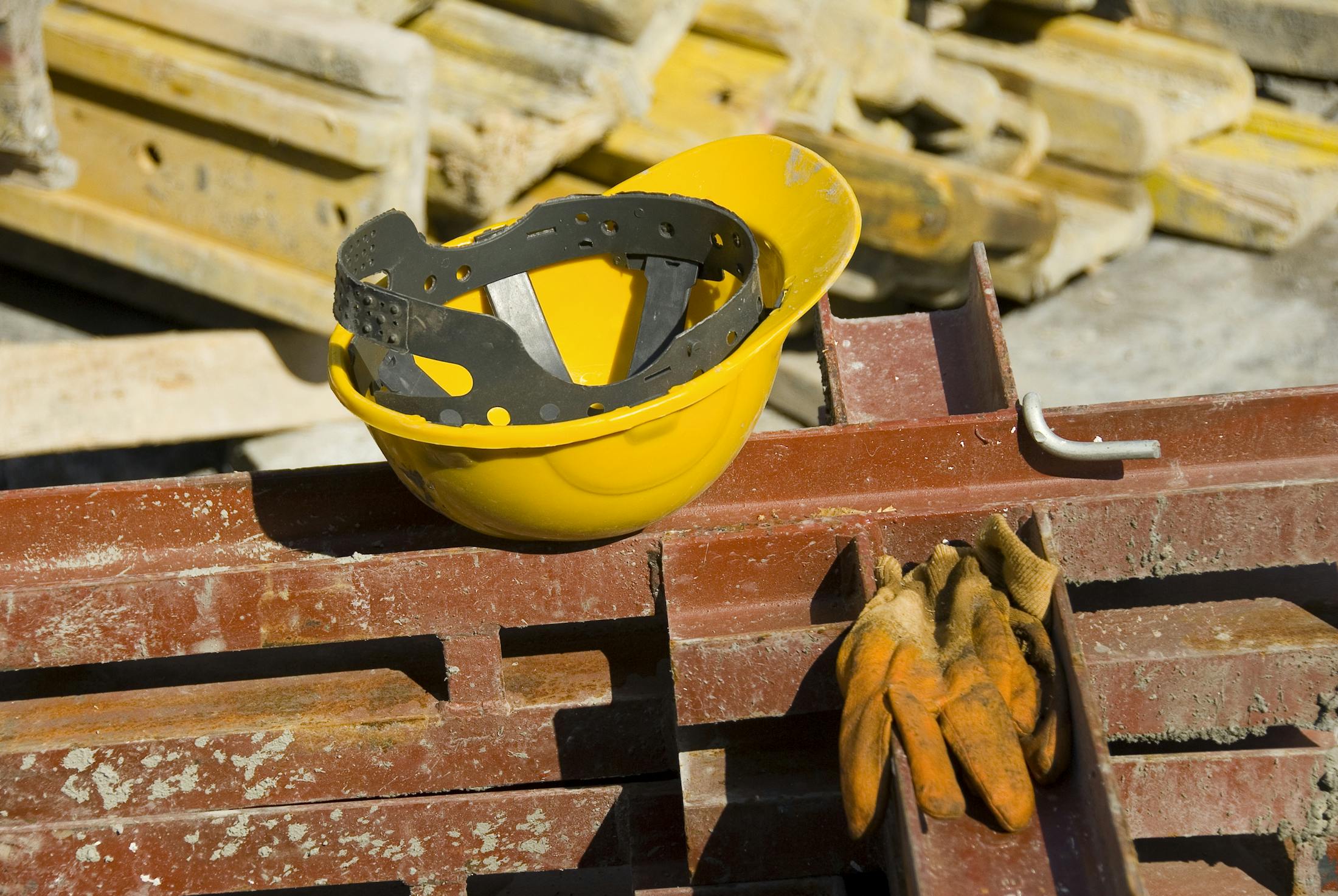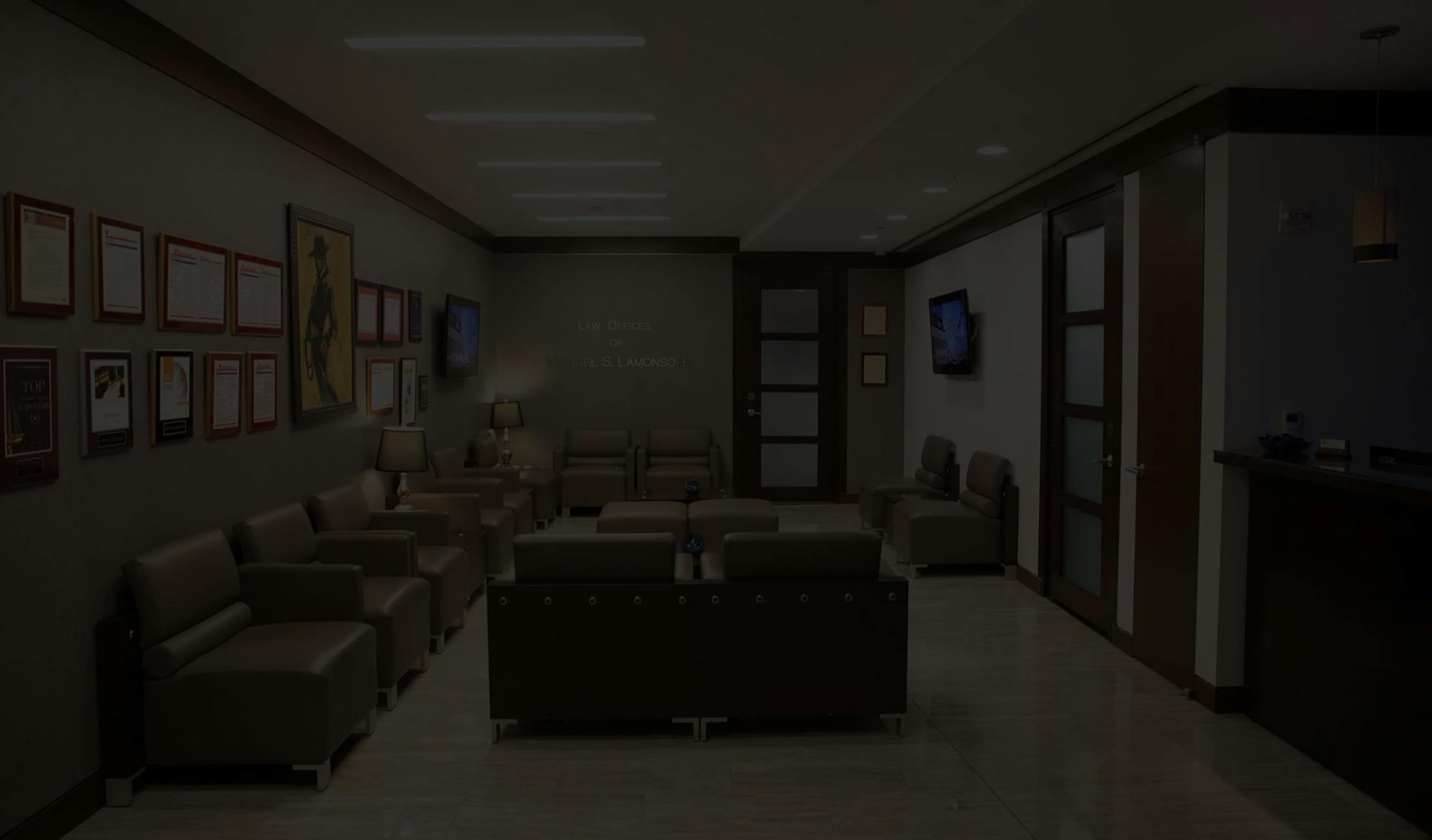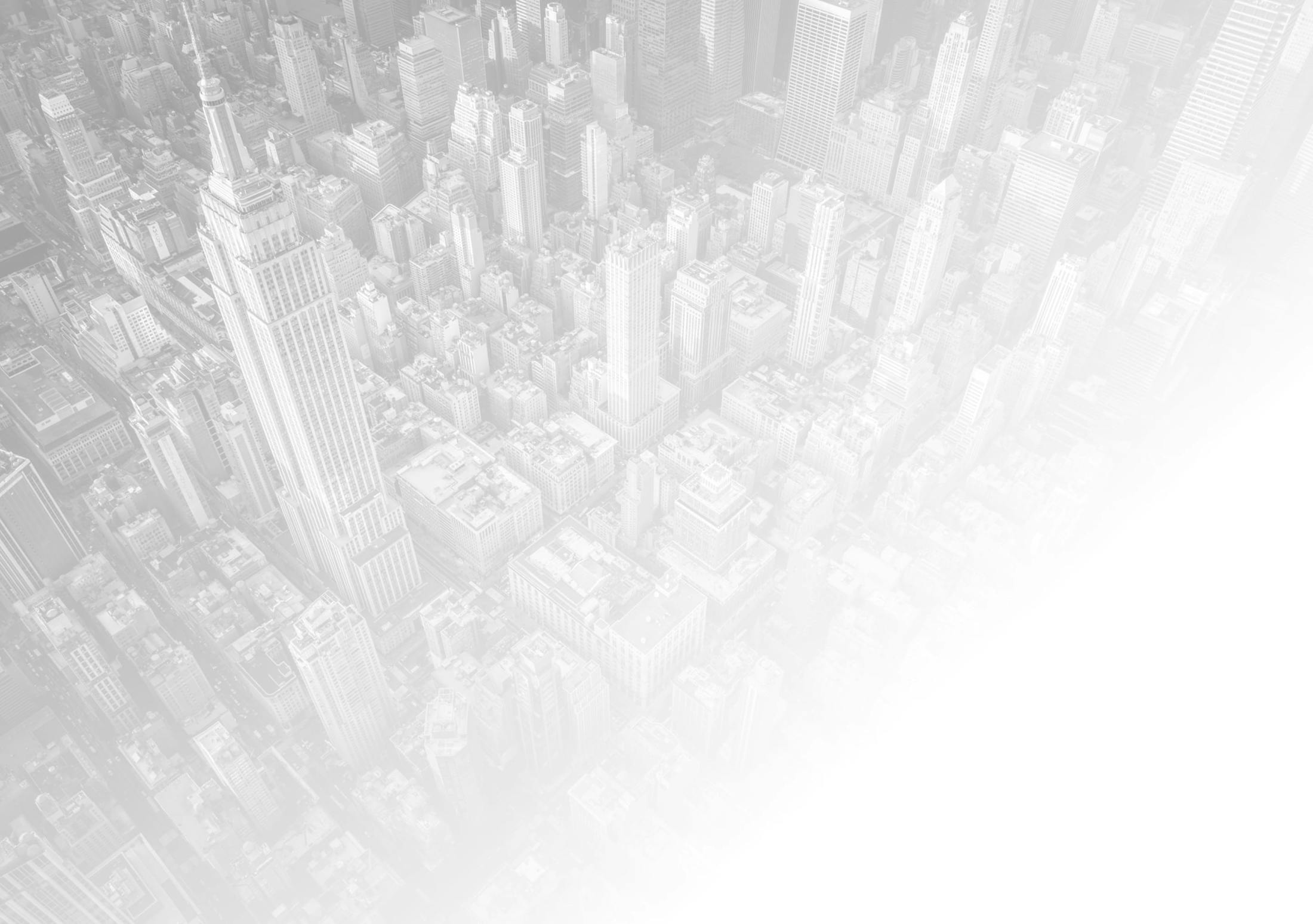For all new client inquiries please fill out the below form to set up a free virtual or telephone consultation.
Faulty Safety Equipment Lawyer in NYC

Holding Negligent Parties Accountable for Faulty Safety Equipment
Workers rely on proper equipment to safeguard their lives while performing dangerous jobs, and when these protections fail, the consequences can be life-altering. In such cases, it is important to hold those responsible—whether construction companies, contractors, site managers, or equipment manufacturers—accountable for their negligence in providing faulty equipment.
Accidents caused by faulty safety equipment on New York City construction sites pose severe risks to workers, leading to catastrophic injuries or even death. Whether it’s defective harnesses, malfunctioning scaffolds, or inadequate protective gear, the failure of safety equipment can turn routine tasks into deadly hazards.
Michael S. Lamonsoff, Esq., known as “The Bull” for his fierce fight for justice, is one of the leading faulty safety equipment accident attorneys in New York City. As the founder and owner of The Law Offices of Michael S. Lamonsoff, PLLC, he has earned his reputation through his forceful approach in achieving large compensation for his clients.
His commitment to his clients' rights, combined with his demonstrable track record, has made him one of NYC’s top-rated attorneys, as recognized by premier online lawyer review sites. If faulty safety equipment has resulted in serious harm to you or a loved one, trust "The Bull" to fight for the maximum compensation you may be entitled to.
Types of Faulty Safety Equipment on Construction Sites in New York that May Cause Accidents and Injuries to Workers
Construction sites in New York are inherently hazardous environments, with workers exposed to various risks daily. Proper safety equipment is essential to mitigate these risks and protect workers from injuries. Moreover, when safety equipment is faulty or improperly maintained, it can lead to serious accidents and injuries.
Personal Protective Equipment (PPE)
Hard Hats:
-
Faults: Cracks, dents, or missing components (like the suspension system) can compromise the helmet's protective capabilities.
-
Risks: Failure to protect the head from falling objects or impacts can lead to severe head injuries, including concussions and skull fractures.
Safety Goggles and Face Shields:
-
Faults: Scratches, cracks, or improper fit can impair visibility and comfort.
-
Risks: Defective eye protection can result in eye injuries from flying debris, chemicals, or radiation.
Gloves:
-
Faults: Worn-out or damaged gloves may not provide adequate protection against cuts, punctures, or chemical exposure.
-
Risks: Lack of proper hand protection can lead to serious hand injuries, including lacerations, fractures, or chemical burns.
Safety Footwear:
-
Faults: Defective boots with worn-out soles or inadequate steel toe protection can fail to provide the necessary safety features.
-
Risks: Injuries from heavy falling objects, slips, and falls can occur due to inadequate foot protection.
Fall Protection Equipment
Safety Harnesses and Lanyards:
Faults: Frayed straps, faulty buckles, or improper sizing can compromise fall protection.
Risks: A malfunctioning harness may fail to secure a worker, leading to falls from heights and potentially fatal injuries.
Guardrails and Safety Nets
Faults: Missing, improperly installed, or damaged guardrails and safety nets may not meet safety standards.
Risks: Inadequate fall protection can result in serious injuries from falls, including fractures and traumatic brain injuries.
Scaffolding and Ladder Safety Equipment
Ladders:
Faults: Broken rungs, improper extension, or structural damage can render ladders unsafe.
Risks: Defective ladders can cause falls, leading to sprains, fractures, or head injuries.
Scaffolding:
Faults: Wobbly structures, missing guardrails, or inadequate bracing can compromise scaffolding safety.
Risks: Accidents due to scaffolding failure can result in falls from height, causing serious injuries or fatalities.
Heavy Machinery and Tools
Power Tools:
Faults: Faulty wiring, dull blades, or malfunctioning safety features can render tools unsafe.
Risks: Malfunctioning tools can lead to cuts, amputations, or electrical shock injuries.
Excavators and Cranes:
Faults: Mechanical failures, such as faulty brakes or lifting mechanisms, can lead to accidents.
Risks: Accidents involving heavy machinery can result in severe injuries or fatalities for operators and bystanders.
Electrical Safety Equipment
Circuit Breakers and Fuses:
Faults: Old or damaged electrical panels may fail to trip during overloads, posing shock hazards.
Risks: Faulty electrical systems can cause electrical shocks, burns, or even electrocution.
Ground Fault Circuit Interrupters (GFCIs):
Faults: Non-functional or improperly installed GFCIs may fail to prevent electrical shocks in wet environments.
Risks: Lack of GFCI protection can result in severe electrical injuries or fatalities.
Emergency Equipment
Fire Extinguishers:
Faults: Expired, improperly maintained, or uncharged fire extinguishers may not function in an emergency.
Risks: Inadequate fire response can lead to severe burn injuries or fatalities in case of a fire outbreak.
First Aid Kits:
Faults: Expired supplies or incomplete kits can hinder effective first-aid responses.
Risks: Inability to provide timely first aid can exacerbate injuries sustained on-site.

OSHA Regulations for the Use of Safety Equipment on Construction Sites in New York
The Occupational Safety and Health Administration (OSHA) is the federal agency responsible for ensuring safe and healthy working conditions across various industries, including construction. In New York, OSHA regulations set forth critical requirements concerning the use of safety equipment to protect construction workers from accidents and injuries.
General Duty Clause (29 U.S.C. § 654)
Overview: The General Duty Clause requires employers to provide a workplace free from recognized hazards that can cause death or serious physical harm.
Implications: Employers must assess the worksite for potential hazards and provide appropriate safety equipment to mitigate these risks.
Personal Protective Equipment (PPE) Standards (29 CFR 1910 Subpart I)
Overview: OSHA outlines specific requirements for PPE to ensure that employees are adequately protected while performing their duties.
Key Provisions:
- Hazard Assessment: Employers must conduct a hazard assessment to identify potential dangers and determine the necessary PPE.
- Training: Workers must receive training on the proper use and maintenance of PPE.
- Provision of PPE: Employers are responsible for providing PPE at no cost to employees.
Fall Protection Regulations (29 CFR 1926.501)
Overview: OSHA mandates fall protection standards for construction workers exposed to falls of six feet or more in the construction industry.
Key Provisions:
- Fall Protection Systems: Employers must provide appropriate fall protection systems, including guardrails, safety nets, and personal fall arrest systems (PFAS).
- Training Requirements: Workers must be trained to recognize fall hazards and understand the use of fall protection systems.
Ladder and Scaffold Regulations (29 CFR 1926.1050 - 1060)
Overview: OSHA sets specific standards for the use of ladders and scaffolds to prevent falls and injuries on construction sites.
Key Provisions:
- Ladder Safety: Employers must ensure ladders are in good condition, properly placed, and used correctly.
- Scaffold Safety: Scaffolds must be designed and erected to support their intended load, and workers must be trained on scaffold safety procedures.
Electrical Safety Regulations (29 CFR 1926.400 - 404)
Overview: OSHA regulations aim to protect workers from electrical hazards on construction sites.
Key Provisions:
- Ground Fault Circuit Interrupters (GFCIs): GFCIs are required for construction sites where workers may be exposed to wet conditions.
- Electrical Equipment Maintenance: Employers must ensure electrical equipment is properly maintained and inspected to prevent electrical hazards.
Machine and Tool Safety Standards (29 CFR 1926.300 - 307)
Overview: OSHA requires that all machines and tools used on construction sites meet specific safety standards.
Key Provisions:
Guarding Requirements: Machines must have appropriate guarding to prevent contact with moving parts.
Tool Maintenance: Employers are responsible for ensuring that tools are properly maintained and free of defects.
Training Requirements (29 CFR 1926.21)
Overview: OSHA mandates that employers provide training to workers regarding safety hazards and the use of safety equipment.
Key Provisions:
- Safety Training: Workers must receive training on recognizing and avoiding hazards, as well as using safety equipment effectively.
Recordkeeping and Reporting (29 CFR 1904)
Overview: OSHA requires employers to keep records of work-related injuries and illnesses, including those related to safety equipment failures.
Implications: Proper recordkeeping helps identify patterns and implement corrective measures to enhance worker safety.
Potential Negligent Parties Our NYC Faulty Equipment Lawyers Can Hold Liable for Damages
In cases involving faulty equipment on construction sites, multiple parties may share responsibility for the resulting accidents and injuries. Here are the potential negligent parties that our NYC faulty equipment lawyers will pursue to maximize damages:
General Contractors
General contractors oversee the entire construction project and are responsible for ensuring that all equipment used is safe and properly maintained. If they fail to fulfill this duty, they can be held liable for injuries resulting from faulty equipment.
Subcontractors
Subcontractors often handle specific tasks on a construction site, which includes the use of specialized equipment. If a subcontractor uses faulty equipment or fails to maintain it, they may be liable for any resulting injuries.
Equipment Manufacturers
Manufacturers of construction equipment are responsible for ensuring their products are safe and free from defects. If a piece of equipment malfunctions due to design or manufacturing flaws, the manufacturer can be held liable for injuries caused by that malfunction.
Equipment Suppliers and Rental Companies
Companies that supply or rent construction equipment have a duty to provide equipment that meets safety standards. If they fail to maintain or inspect their equipment properly, they can be held responsible for any accidents that occur.
Maintenance and Repair Companies
Third-party companies that are hired to maintain or repair equipment are also potential defendants. If they fail to perform their work adequately, leading to equipment failure, they may be liable for any injuries resulting from that negligence.
Construction Site Owners
Property owners may have a responsibility to ensure that the construction site is safe and that all equipment meets safety standards. If a property owner is aware of faulty equipment and fails to take corrective action, they may also be held liable.
Safety Inspectors
Inspectors are responsible for ensuring that construction sites comply with safety regulations. If an inspector overlooks faulty equipment during a safety check, they may be liable for injuries caused by their negligence.
Architects and Engineers
Design professionals may also bear some responsibility if faulty equipment results from inadequate design specifications or oversight. If their plans contribute to unsafe conditions, they can be held accountable for any injuries that occur.

Get Aggressive Legal Representation from Our Proven NYC Faulty Safety Equipment Lawyer
When it comes to fighting for justice after a faulty safety equipment accident in New York City, no one is more suited than Michael S. Lamonsoff, Esq. "The Bull." While most cases settle, Mr. Lamonsoff prepares every case as if it is going to trial, striking fear into the hearts of insurance companies who want to control the process and offer low compensation.
At The Law Offices of Michael S. Lamonsoff, we aggressively litigate each case to take the power away from the insurers and prepare to present your case before a jury—which is made up of people like you. The closer we get to trial, the more the insurance companies worry about losing control and the more money they may offer. Trust "The Bull" and his elite legal team to take on the insurance giants and recover the largest possible compensation for your injuries and losses. To schedule your free consultation, call us at 212-962-1020 or fill out this online contact form.

